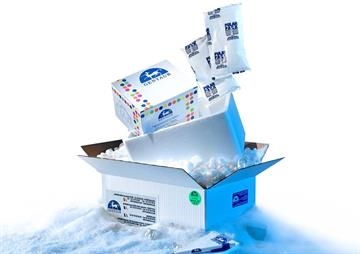- Categories
- Specials and Offers
- Custom Services
- Products
IFNA1 (IFN-alpha1)


IFNA1 (IFN-alpha1)
542.00 €
In Stock
quantity
product details
Catalog number: 544 - MBS517097-002mg
Product Category: Business & Industrial > Science & Laboratory
MyBiosourceGentaur
Size: 0.02mg
Related Products
Z102395
Recombinant Human IFNA1 (IFN-alpha1)
All known subtypes of IFN- alpha show the same antiviral antiparasitic, antiproliferative activities. IFN-alpha forms are produced by monocytes/macrophages, lymphoblastoid cells, fibroblasts, and a number of different cell types following induction by viruses, nucleic acids, glucocorticoid hormones, and low-molecular weight substances. All IFN-alpha subtypes possess a common conserved sequence region between amino acid positions 115-151 while the amino-terminal ends are variable. Many IFN-alpha subtypes differ in their sequences at only one or two positions. IFN-alpha and IFN-beta are thought to bind to the same receptor. Signal transduction mechanisms elicited after binding of IFN-alpha to its receptors involves tyrosine phosphorylation of various non-receptor tyrosine kinases belonging to the Janus kinases.
341.00 €
Z102397
Recombinant Human IFNA1 (IFN-alpha1)
All known subtypes of IFN- alpha show the same antiviral antiparasitic, antiproliferative activities. IFN-alpha forms are produced by monocytes/macrophages, lymphoblastoid cells, fibroblasts, and a number of different cell types following induction by viruses, nucleic acids, glucocorticoid hormones, and low-molecular weight substances. All IFN-alpha subtypes possess a common conserved sequence region between amino acid positions 115-151 while the amino-terminal ends are variable. Many IFN-alpha subtypes differ in their sequences at only one or two positions. IFN-alpha and IFN-beta are thought to bind to the same receptor. Signal transduction mechanisms elicited after binding of IFN-alpha to its receptors involves tyrosine phosphorylation of various non-receptor tyrosine kinases belonging to the Janus kinases.
558.50 €
Z102399
Recombinant Human IFNA1 (IFN-alpha1)
All known subtypes of IFN- alpha show the same antiviral antiparasitic, antiproliferative activities. IFN-alpha forms are produced by monocytes/macrophages, lymphoblastoid cells, fibroblasts, and a number of different cell types following induction by viruses, nucleic acids, glucocorticoid hormones, and low-molecular weight substances. All IFN-alpha subtypes possess a common conserved sequence region between amino acid positions 115-151 while the amino-terminal ends are variable. Many IFN-alpha subtypes differ in their sequences at only one or two positions. IFN-alpha and IFN-beta are thought to bind to the same receptor. Signal transduction mechanisms elicited after binding of IFN-alpha to its receptors involves tyrosine phosphorylation (see also: PTK; protein tyrosine kinase) of various non-receptor tyrosine kinases belonging to the Janus kinases.









